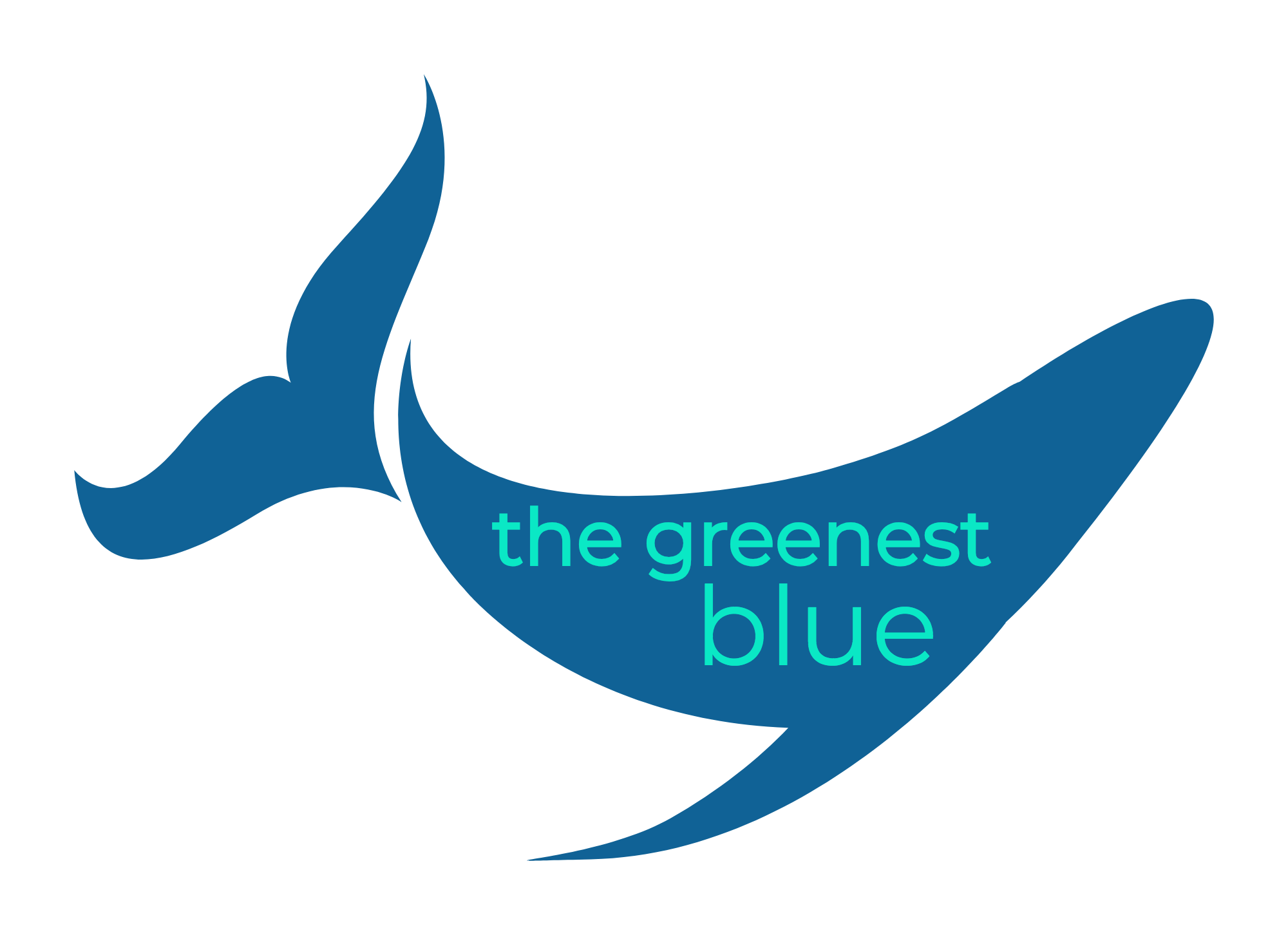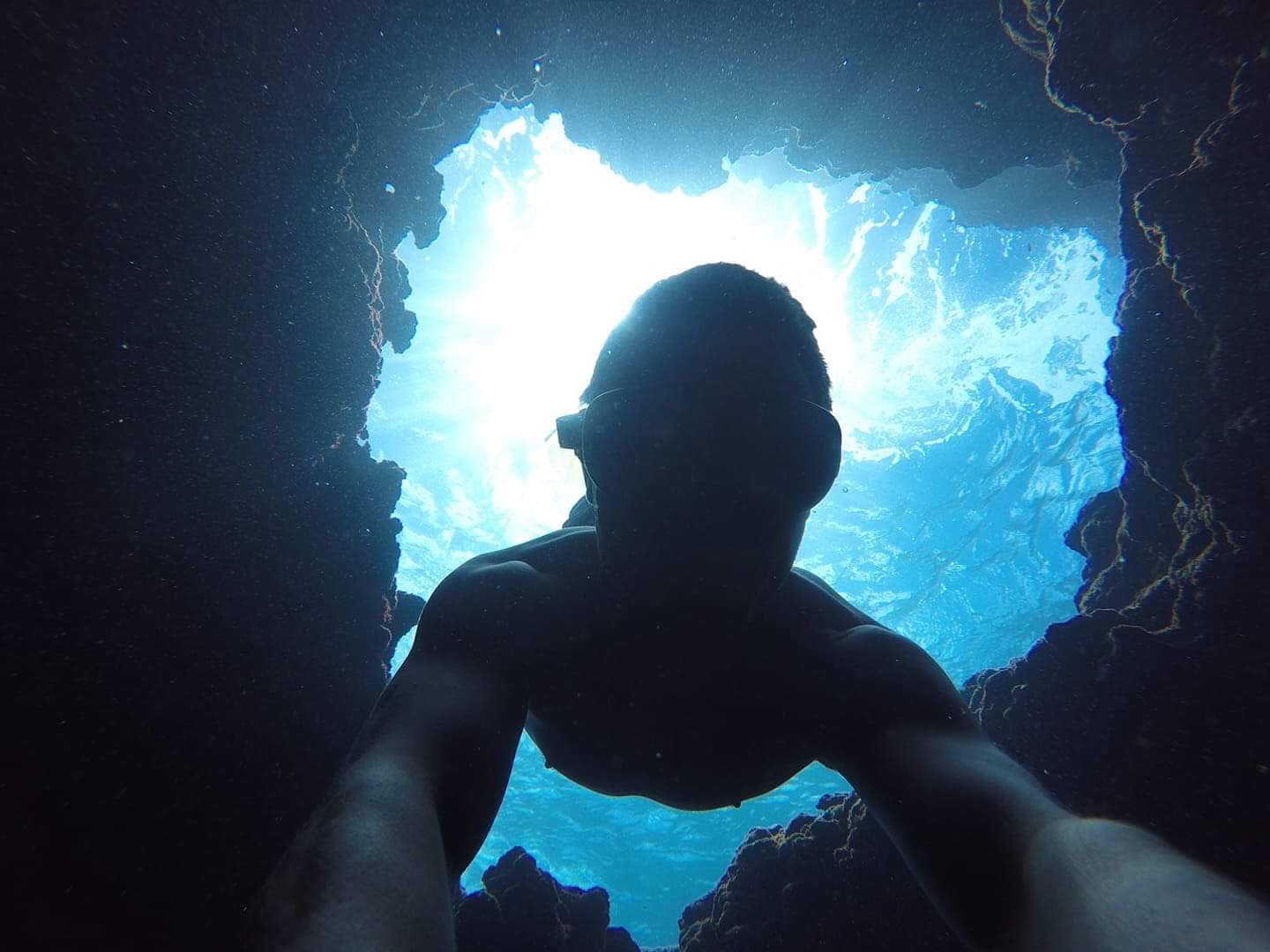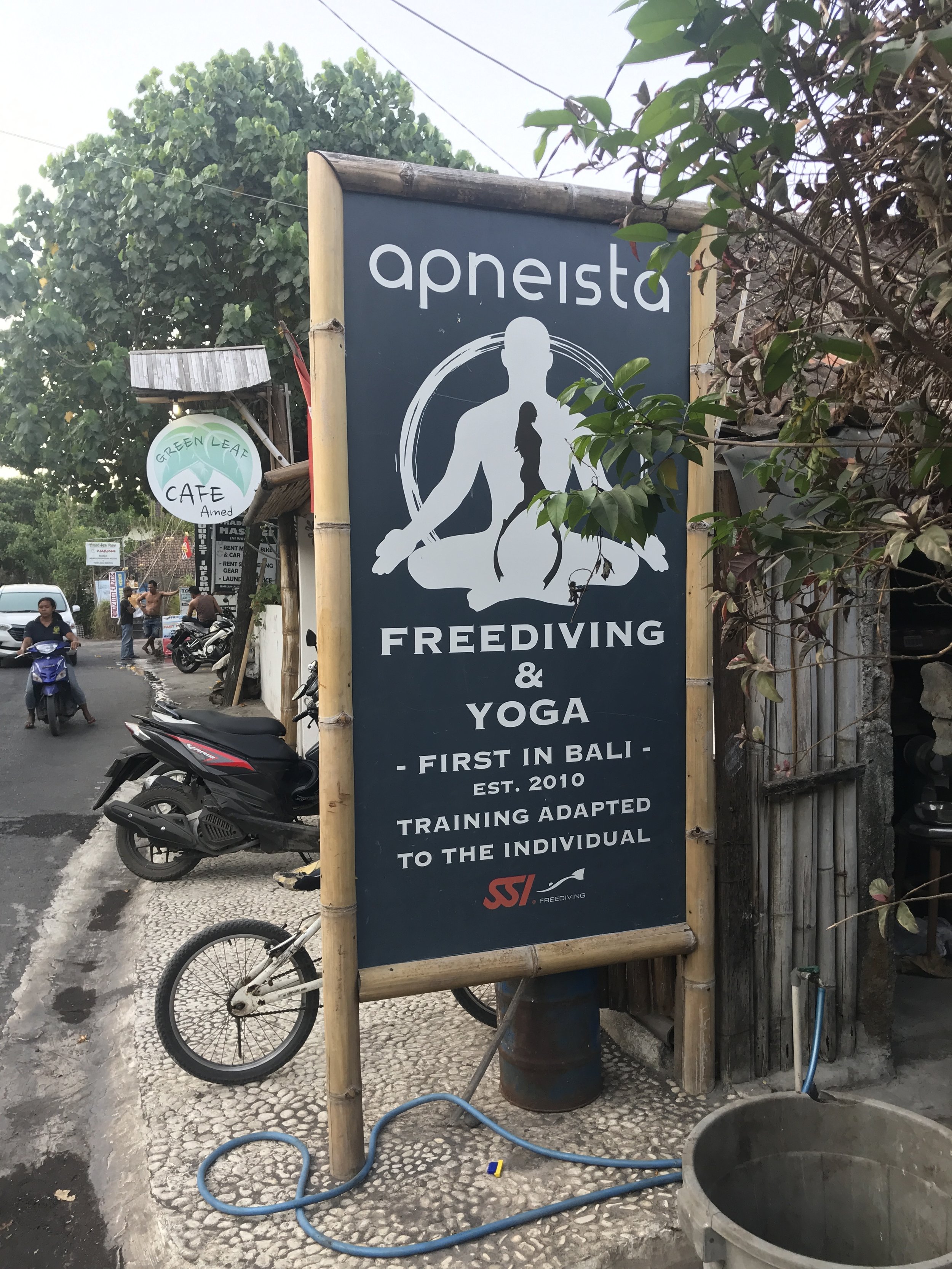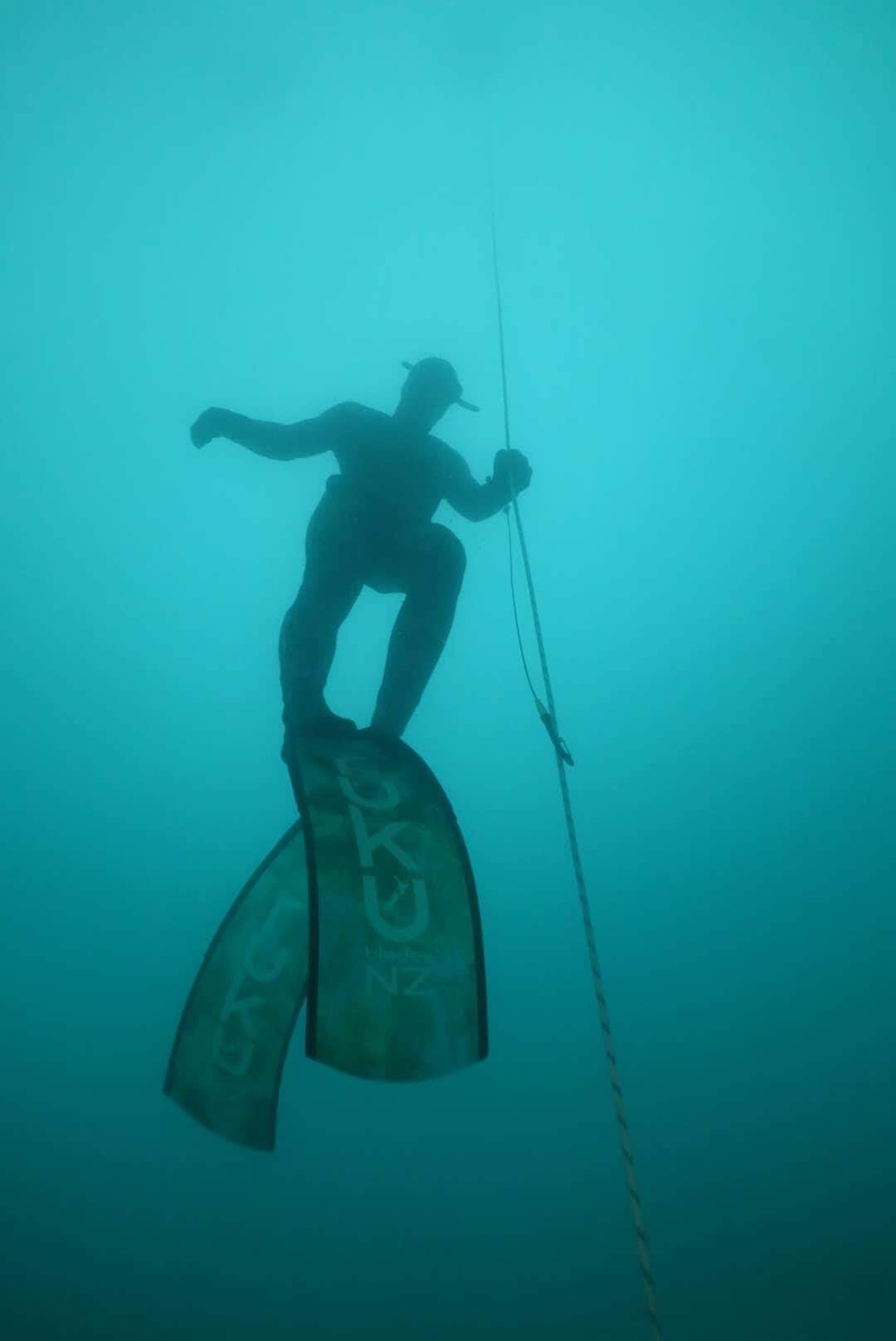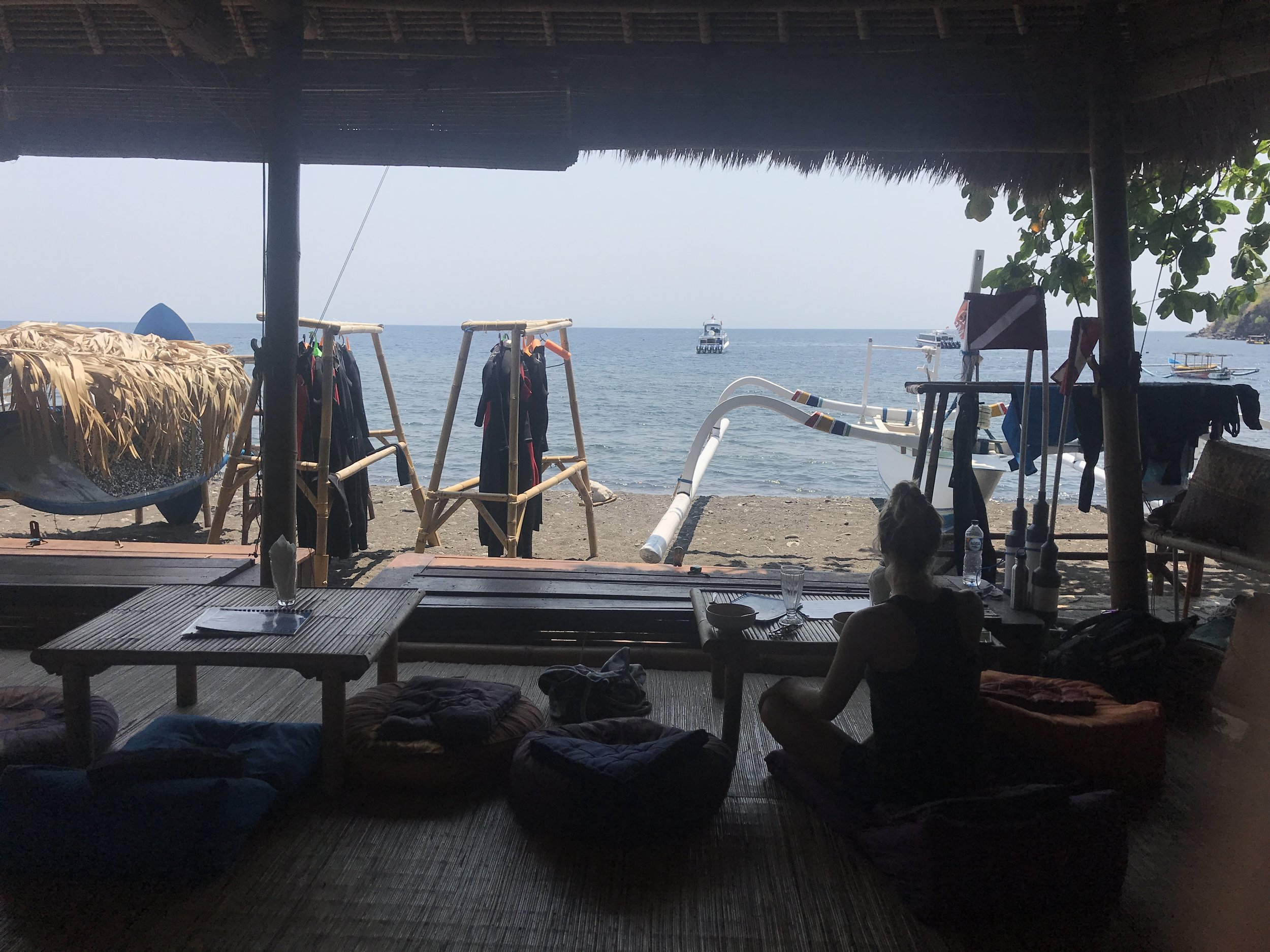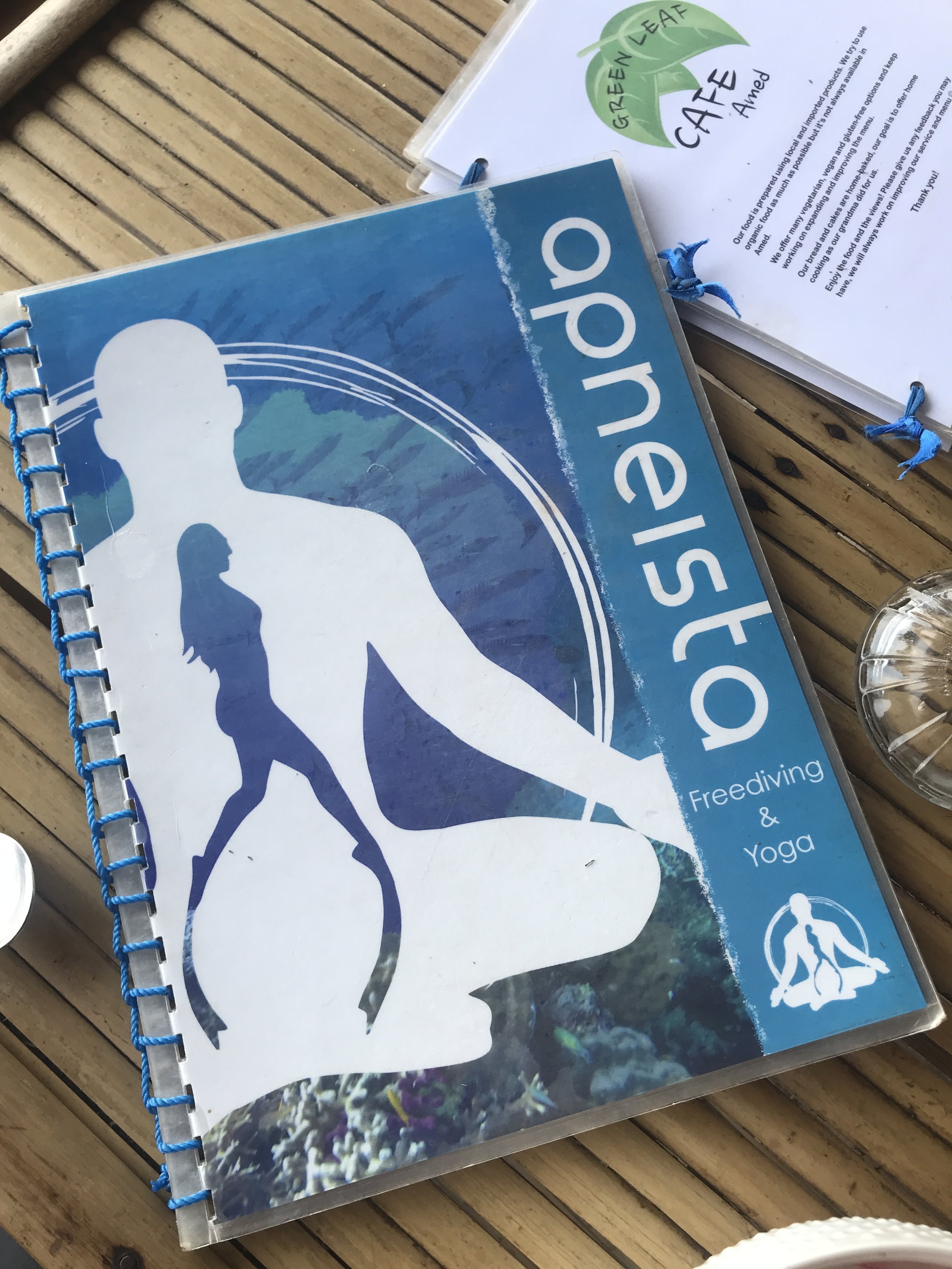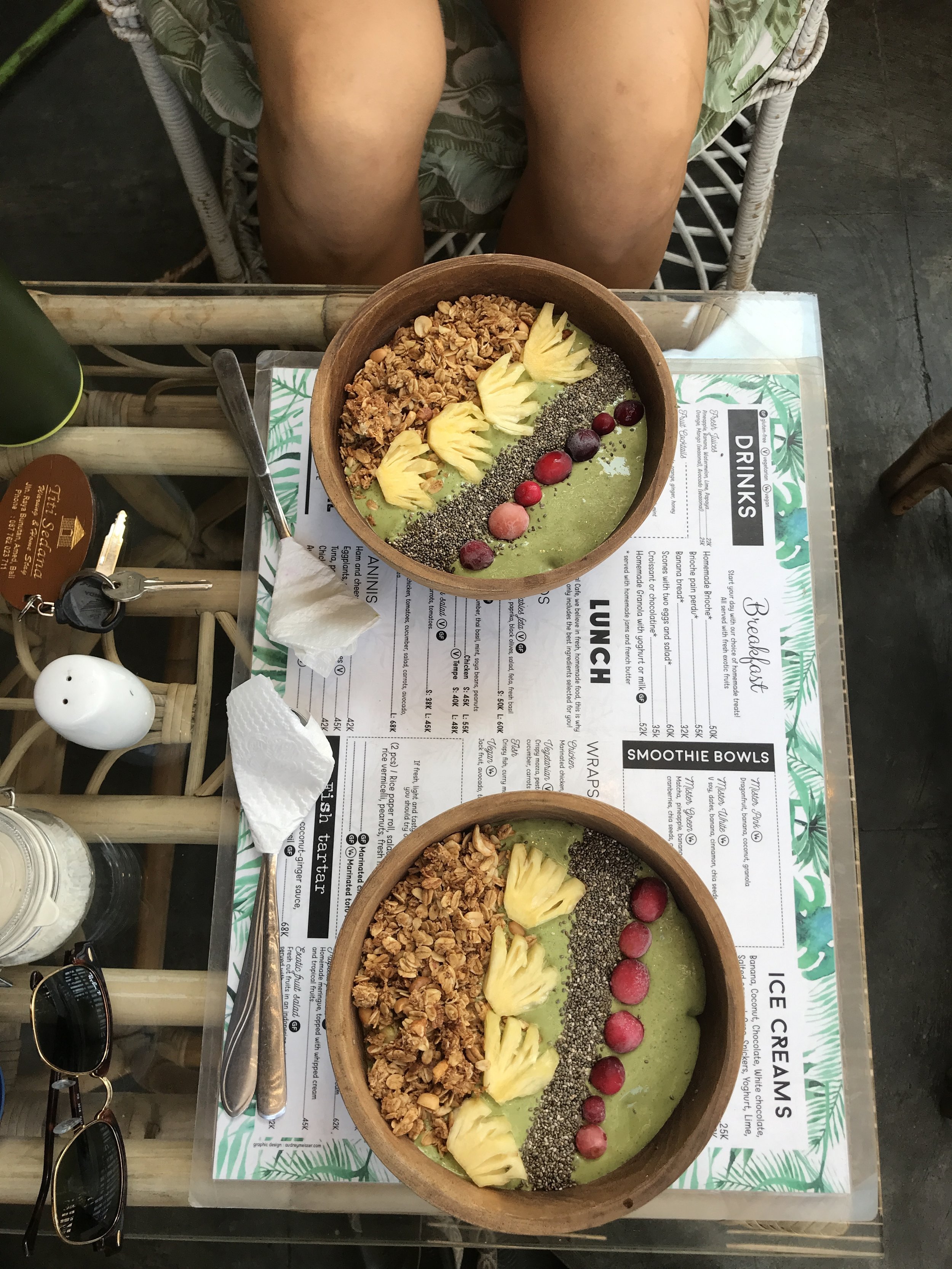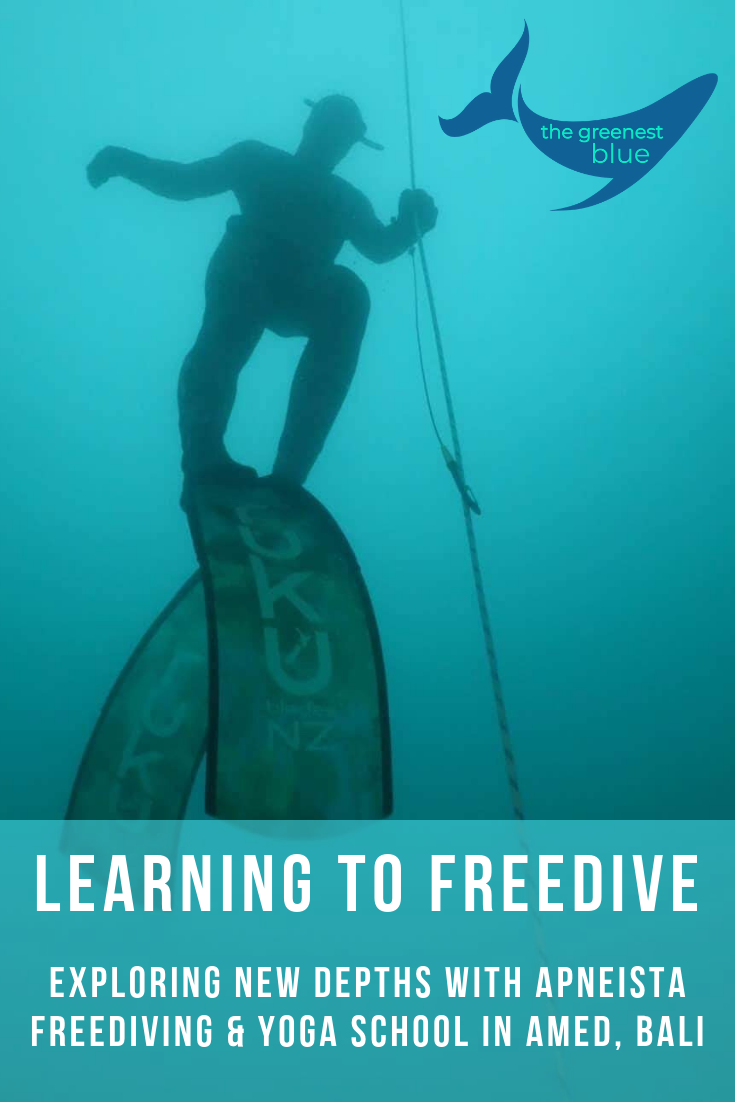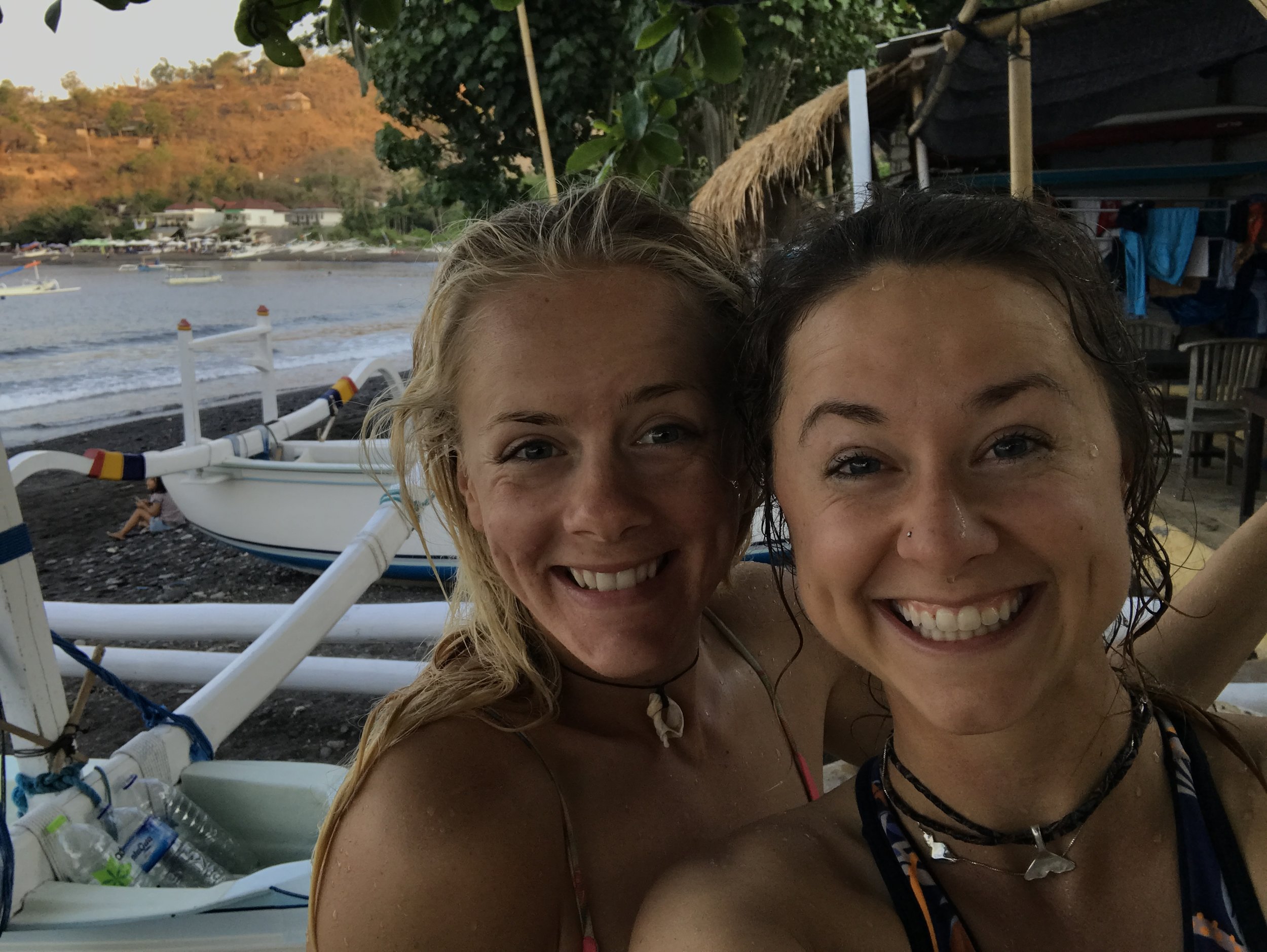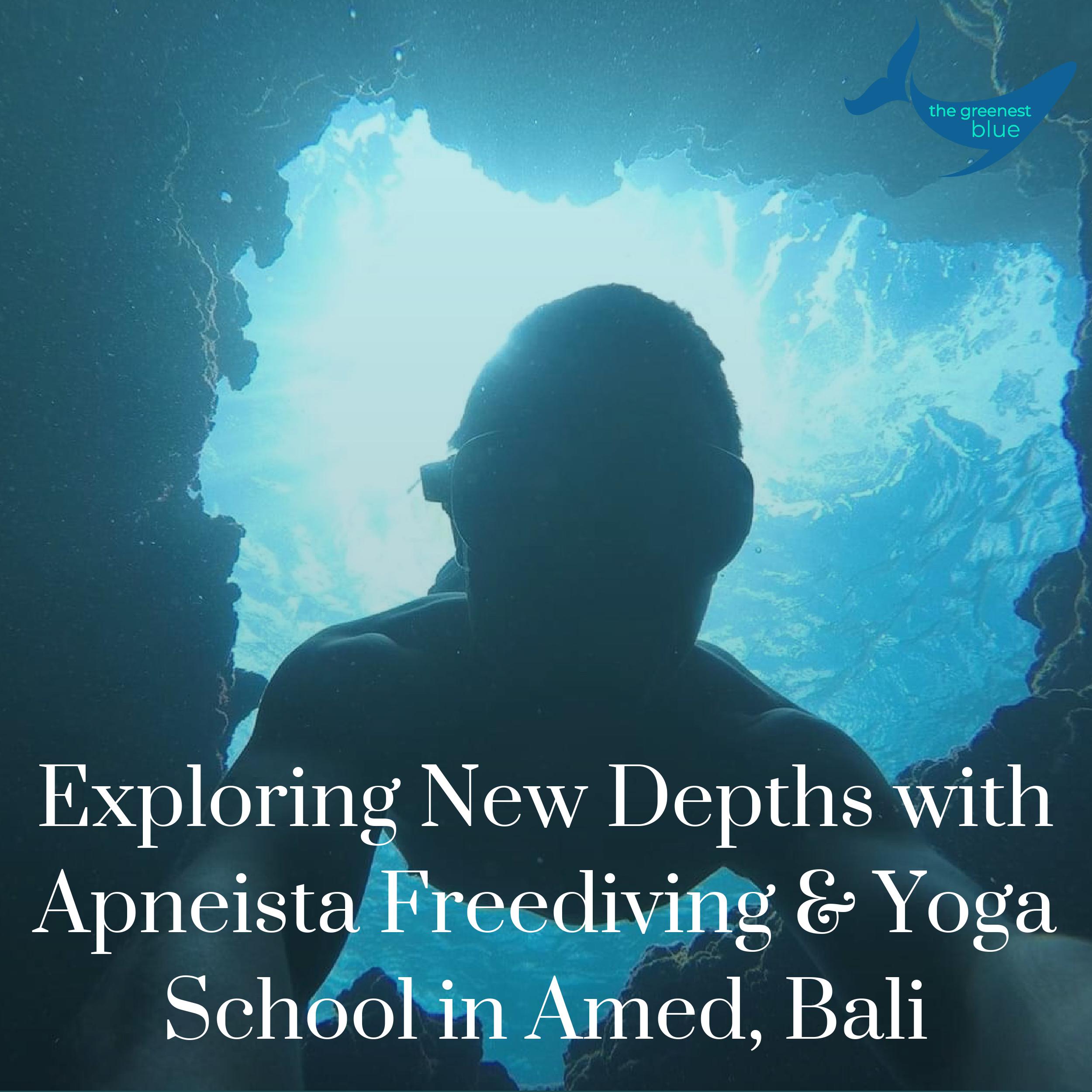Exploring New Depths with Apneista's Level One Freediving Course - Bali
What is Freediving?
What does the term freediving bring to mind for you? Diving without scuba tanks? Spearfishing? Long breath holds? Insanity? For me, it was mainly just a talent I admired of other people when I saw them diving down to look at an octopus or a moray eel in Molokini Crater for extended periods of time.
My first-ever experience with the activity was when I started my job as a Marine Naturalist with Pacific Whale Foundation in Maui three and a half years ago. In the training sessions that prepared us for the job, our boss showed us how to freedive about 10 to 15 feet down to a mooring buoy with a line in hand to secure our boat at snorkeling spots. The basics were demonstrated - relax at the surface first, take a deep breath, do a nice duck dive, kick yourself down and equalize along the way (“don’t you go diving with a cold!”), loop your line, then shimmy yourself back up. Relax. Golden. But we didn’t dive into the science of it.
Facing A Fear
Now, years later, I’ve spent much more time underwater with the help of a trusty tank strapped on my back. Becoming (SCUBA) dive-certified was a big step for me a few years ago, and it helped me conquer a hell of a lot of irrational water-based fears. My comfort level in the water grew enormously. There was always that safety blanket surrounding me, knowing that some good ole O2 was sitting on my shoulder. I still played around a bit with freediving when I went out snorkeling. It was a good challenge, but I never, ever pushed my limits. What really turned me off was the incredible compression I felt in my lungs, the so-called “urge to breath.” I hated that feeling of “I’m gonna die! This is it. Stupid Lauren, why did you dive down. Get to the surface. Land lubber. Breath air. You’re going to drown.” It freaked me out and brought back to mind a few gnarly tumbles I’ve taken off of a surfboard - the kinds of tumbles where air was always just out of reach.
And this feeling - actually, this crippling fear - is precisely what pushed me to sign up for a freediving course this week in Bali. I wanted to overcome that shit (Did you read the post from the last week of my Eco-Challenge about doing one thing every day that scares you? Get in on that here.) My friend Sarah had mentioned her interest in doing a course a few months ago, and it sounded intriguing, but I at first didn’t think about it too much because my travel plans were so up in the air. Fast forward a few weeks, and everything just sort of shifted around to allow this trip to Bali to happen.
A Entry-Level Freediving Course at Apneista
We signed up for a Level One course at Apneista, the first freediving school in Bali. It was established in 2010 in the seaside village of Amed, which Sarah and I have quickly fallen in love with. This is a two day course that integrates science-based technique with insights from yoga and meditation to explore the mind-body connection, which I quickly learned is exactly what freediving is all about. The location of Apneista is perfection. Your theory sessions are taught steps away from the beach from comfy cushions, where you can look out and see the freedivers practicing. When it’s time for the in-water sessions, you literally grab your gear, walk across the beach, wade into the water, and swim maybe a few hundred meters off shore to the dive area. The reef along the way is glistening with life (and plastic, unfortunately, but more on that in another blog post). There’s a very vegan-friendly cafe on the premises with the most incredible ginger tea and smoothie bowls. All of your diving equipment is provided. And if you want, you can choose to get a certification from SSI, which allows you to complete further freedive training elsewhere in the world.
I didn’t really know what to expect from the course, but I arrived on day one with an open mind, a pen, and my journal. I was excited. I knew that I would be intrigued by the theory, all of the sciencey bits, and I was hoping this expanse of knowledge would make me feel a little more comfortable and confident in the water. The instructors were incredible, and in my opinion the course was structured perfectly. Everything was explained in simple terms, but with enough science background to give credibility and show you the logic behind certain techniques. Our instructor, Anna, wove aspects of physiology with discussions of physics, and we then ventured into the more meditative side of the sport. If you aren’t relaxed, chances are you’ll have a not-so-great dive. We learned a variety of beneficial breathing techniques, stretches, and mental strategies to help prep ourselves for our time in the big blue. I won’t go into it all here - you have to take the course for that - but I will say I was most intrigued by the Mammalian Dive Reflex. I also loved the mutual benefits and characteristics of freediving and yoga practice. “It’s like yoga in the water,” someone commented today.
The in-water sessions that were spread throughout the two days were so much fun. At first, it was an entirely new experience diving down the length of a line to a suspended little platform, not looking at much in the way of fish or reefs. It was at times eerie, other times frustrating. But with the right relaxation and breathing techniques coupled with the reminder to check your posture and equalize frequently, it became a lot less scary and a lot more meditative. I started to crave the feeling of being below.
ZING. This is exactly what I wanted out of the course. I wanted to better understand the science behind freediving - we have more than enough oxygen in our blood, even as the CO2 levels in our body bring out that urge to breathe. I wanted to become more comfortable in the water with longer breath holds so I can spend more time with the fishies and the sea turtles down below me when I’m snorkeling. I wanted to know that the urge to breathe was completely natural, safe, and not a direct indication that my lungs are about to explode. False. It’s just CO2!
After three theory sessions and three in-water sessions, I felt simultaneously pumped and relaxed. Our training group was nice and small with six people, only three per instructor in the water, and we all got on excellently. At the end of day two, we debriefed over spicy ginger tea, popcorn, and stories of our successes and obstacles. The community atmosphere really helped us get the most out of our course. There was no judgement, no emphasis on how deep you could go - merely a focus on getting you as comfortable and safe in the water as possible.
A New Hobby!
I’m smitten. I probably won’t become a freediving master diver anytime soon, but I am certainly intrigued and excited enough to consider planning an adventure back to Apneista to get my advanced certification, which focuses more on safety and training. I can’t recommend the school enough - thanks especially to Felipe, Anna, and Shaz for your inspiration, your motivation, and your dedication to the sport of freediving. It truly is a beautiful way to explore down below!
Also - to further add to the obsession, Apneista and its founders are in the midst of building an amazing eco-village called Blue Earth up on the hill above the bay. It has an amazing restaurant (homemade coconut yoghurt, yo), a yoga shala with the most beautiful view imaginable, and many other exciting things to come. They are really giving us the whole experience!
